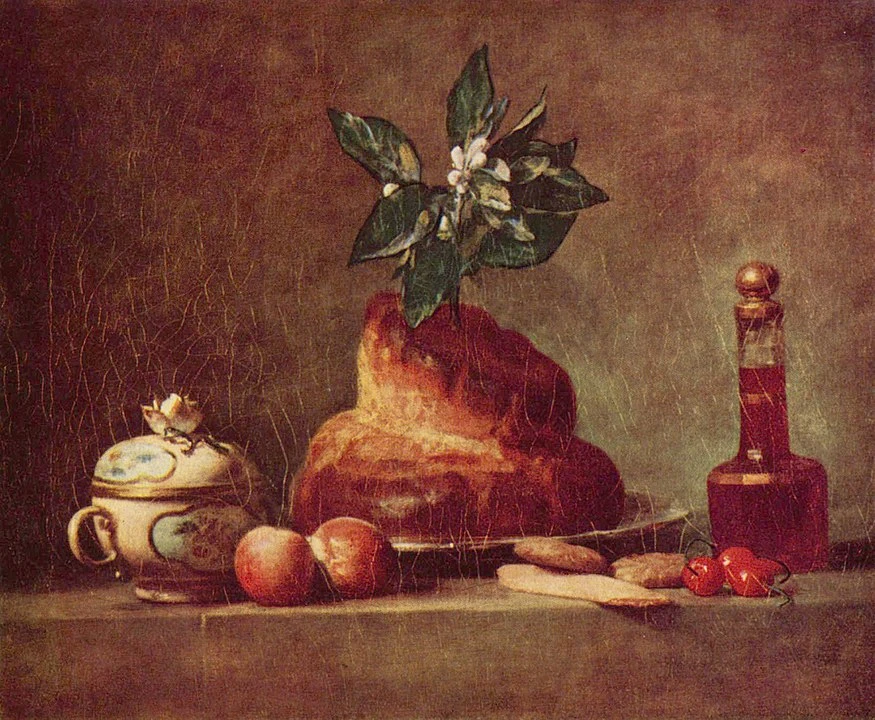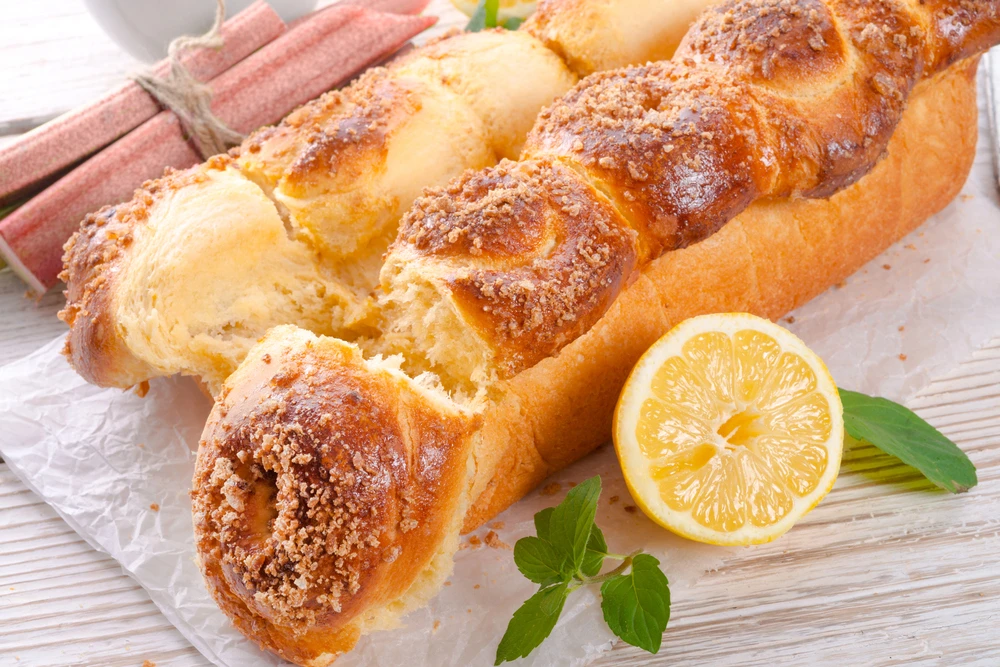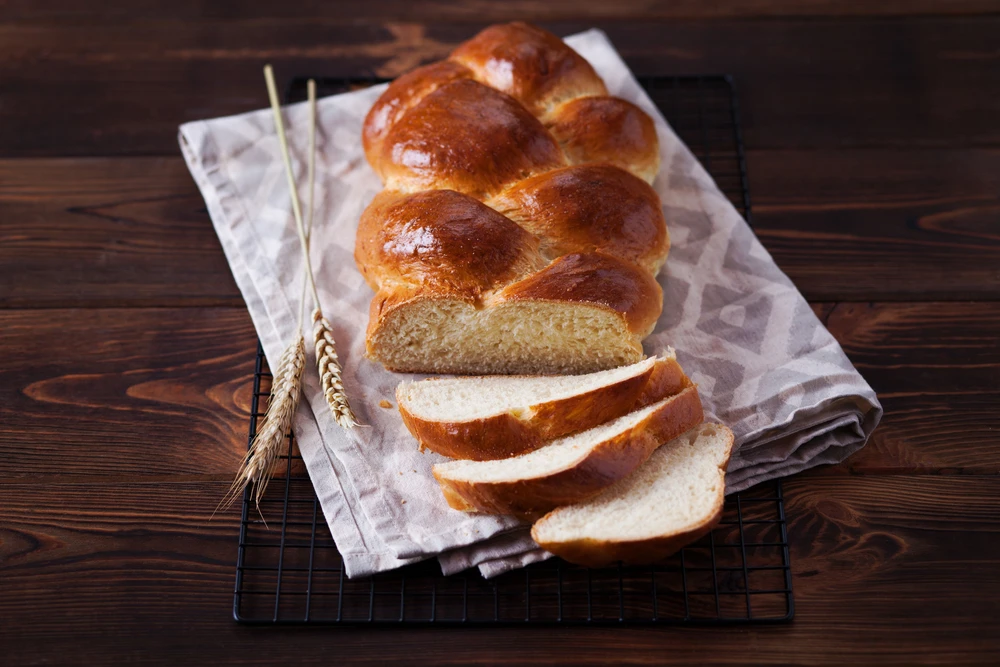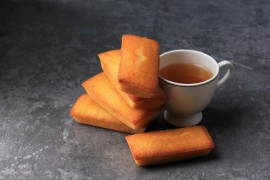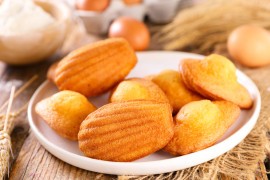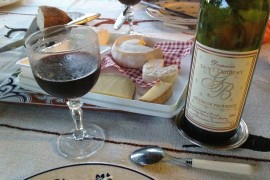Brioche goes way back in history
Brioche, that soft, buttery delight, is not just a simple pastry: it's a staple of French culinary culture. It's far from "light", since a real brioche must contain at least 400 grams of butter per kilo of flour. To this must be added eggs and sugar. The word "brioche" comes from the Norman verb "brier", meaning "to crush", but we're not quite sure. Especially as the word is really very old. Already popular in the Middle Ages, brioche was a dish reserved for the tables of castles, a luxury that common folk couldn't afford. It was in the 19th century that brioche began to be democratized, becoming a staple of family Sundays. Since the industrialization of the 1960s, brioches have been readily available everywhere, although nothing can beat a real brioche made by a baker... or by grandma! Or by grandma!
La brioche by Jean Siméon Chardin (1699-1779) via The Yorck Project (2002) 10.000 Meisterwerke der Malerei (DVD-ROM), distributed by DIRECTMEDIA Publishing GmbH. ISBN : 3936122202., Domaine public, https://commons.wikimedia.org/w/index.php?curid=149241
Brioches for a gourmet tour of France
The brioche we know today originated in Vendée, famous for its delicate, airy version. But every region has its own brioche: the Metz brioche, braided and sprinkled with sugar; the Parisian brioche, with its distinctive round head; and the Nanterre brioche. Some brioches known as "gâches" in Normandy and Vendée are the result of "failed" recipes, but they've become beloved specialties! And then there are brioche variants like the gâteau de Saint Genix in Savoie, the gâteau battu in Picardie or the fallue normande enriched with cream. In the Dauphiné region, it's flavored with orange blossom and called pogne. The Alsatian kougloff is also one of the most delicious forms of brioche.
How do you eat a good brioche?
Natural is perfect if it's fresh from the baker, or warm after you've made it yourself and taken it out of the oven. You can also give it a little extra with jam. It's also great in a "brioche perdue" version, replacing the bread in the French toast.
You bet it makes you want to.... Photo chosen by monsieurdefrance.com: dar19.30 via depositphotos
How about an easy brioche recipe?
As easy as this recipe is, it requires a little patience, because the secret of a good brioche is time. It's time that allows the brioche to rise properly, so that it's plump and airy;
Ingredients to make a brioche for 4 to 6 people
- 250 g flour
- 30 g sugar
- 1 sachet dry baker's yeast
- 3 eggs
- 125 g soft butter (cut into pieces)
- 1 pinch salt
- 1 tablespoon milk (for gilding)
- optional: granulated sugar just before baking;
Buns can be given all sorts of shapes. Photo chosen by monsieurdefrance.com: matka_Wariatka via depositphotos
Making brioche: the recipe
-
Prepare the dough: In a large bowl, mix the flour, sugar, and yeast. Then add the eggs one at a time, mixing well. Knead the dough for about 5 minutes until smooth.
-
Incorporate the butter: when the dough is smooth, add the pieces of soft butter and salt and hop! Knead for a further 5 to 10 minutes. The butter should be well incorporated and the dough should be soft and slightly sticky.
-
First rise: to make your first rise, cover the bowl with a clean tea towel and leave the dough to rise at room temperature for 1 to 2 hours. It should double in volume
-
Shape the brioche: After a good two hours' rest, take the dough and degas it by pressing down to expel the air. Then shape the brioche as you wish: a ball, or even a braid by intertwining two strands of dough.
-
Second rising: Place the brioche in a mold (or on a baking sheet with parchment paper so it doesn't stick) and leave for at least another hour to rise properly.
-
Baking: Preheat oven to 180°C. Brush the brioche with a little milk for gilding. Bake for 20 to 25 minutes, until golden brown.
-
Tasting: Allow to cool slightly before serving.

